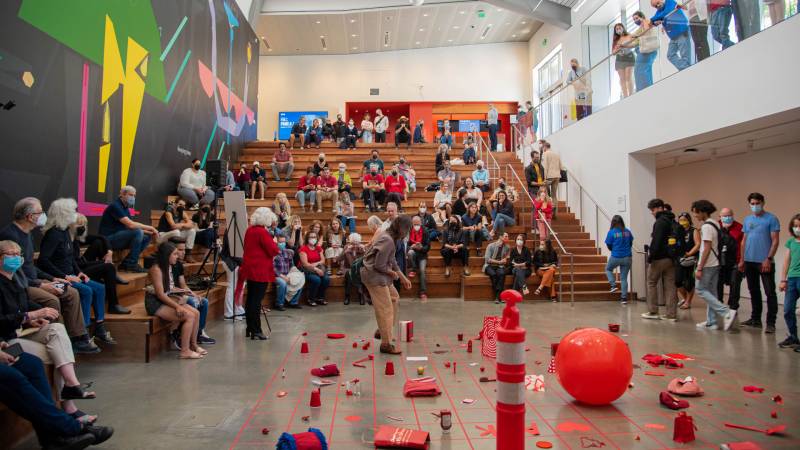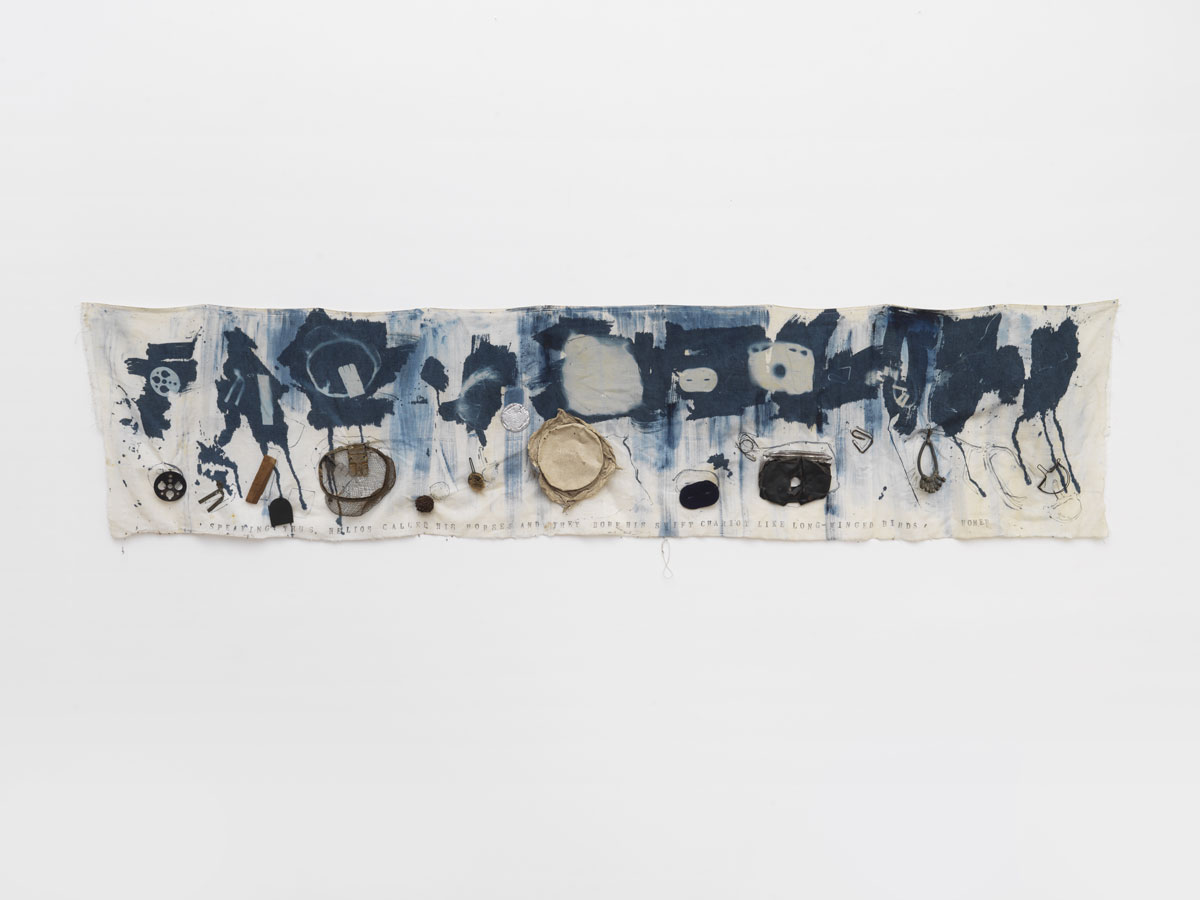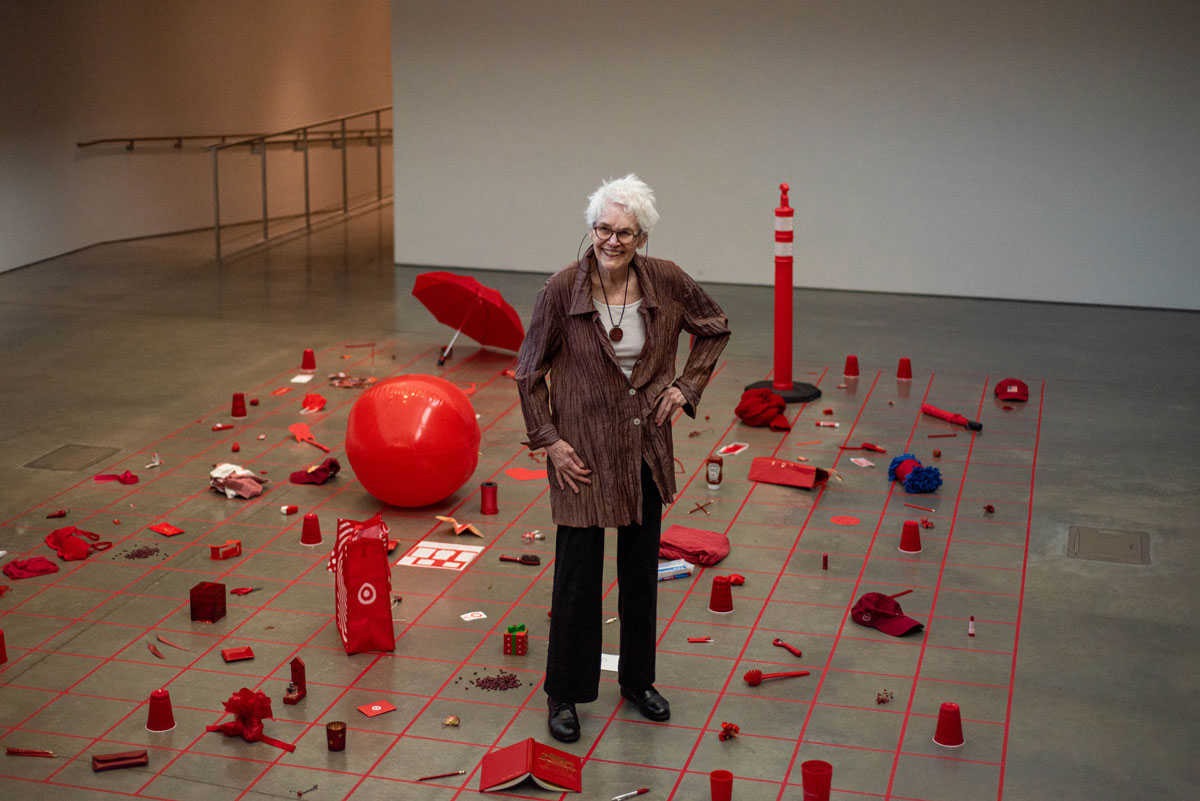To launch the July 23 public opening of by Alison Knowles, the retrospective at the UC Berkeley Art Museum and Pacific Film Archives (BAMPFA) covering 62 years of the artist’s production, visitors were invited to participate in the latest revival of Celebration Red (1962–present), one of the most well-known of Knowles’ event scores. Participants placed a single red object they brought with them in each square of a grid laid out on the floor of the museum’s amphitheater-styled atrium space.
During the performance, a certain informality prevailed. Participants and observers alike milled about and hovered at the edge of the work. Knowles sat in the front row, surrounded by family members, friends, old classmates, and fans. The hum of small-group conversations rose and fell. All the while, objects appeared: ten Solo beer cups, a red beret, an inflated beach ball, a Target shopping bag, a bobbing wooden toy, a polka-dot birthday hat, a pair of fuzzy dice, and a lock of red hair cut with a pair of red scissors, to name a few. One woman outstretched her hand and dropped an unidentified (from my vantage point) object to the floor. Dissatisfied with its placement, she nudged it to the center of the square.
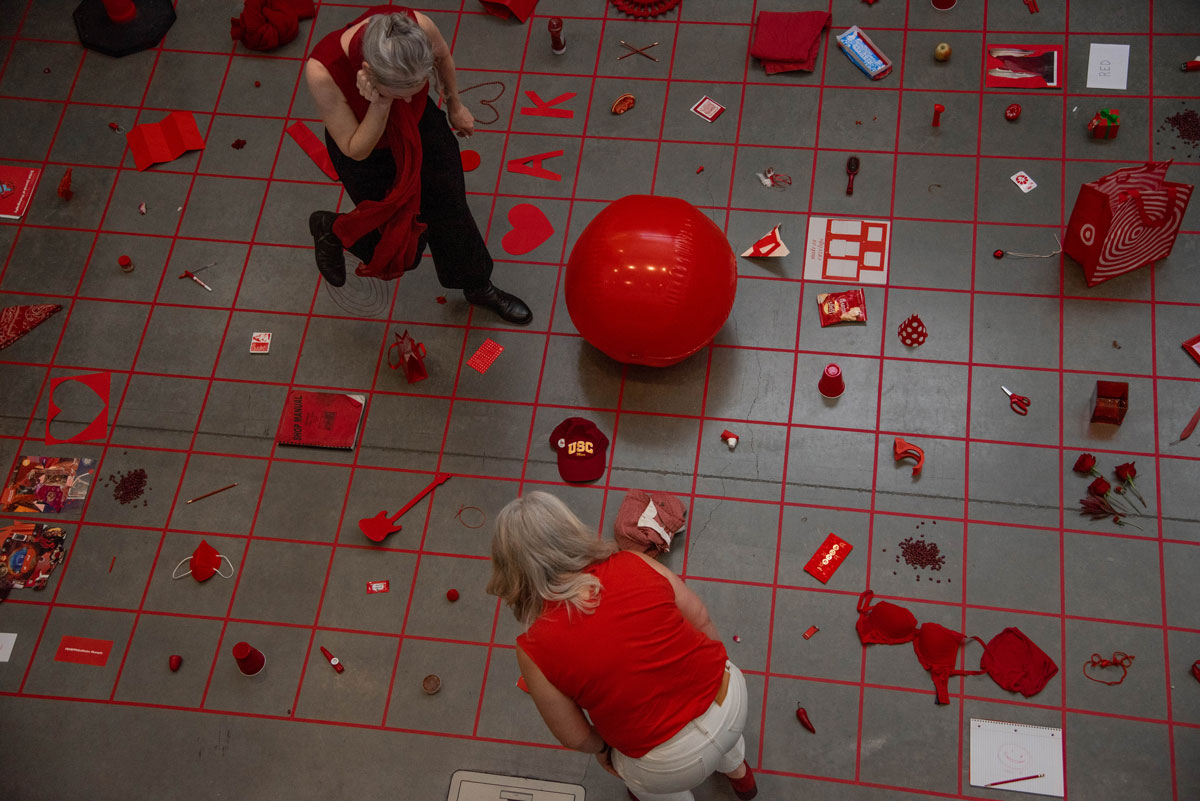
This unscripted, barely observed moment in a sequence of similar ones nevertheless encapsulated a resonant tension that prevails throughout Knowles’ oeuvre: what it means as an artist to create the potential for an artwork and not the work itself. She authors the underlying composition, rhythm, or structure and sets the piece in motion. She leaves the outcome to chance, and our attention is focused on that outcome. But her attention lies at the juncture between the possible and the realized, at the point where intention leaves off and knowing begins.
This tension is present from the very beginning of her engagement with the Fluxus movement, which represented a radical break with art production of the mid-20th century. (The show takes up the two front galleries of the museum’s lower level. A rear gallery features Fluxus-related work from BAMPFA’s permanent collection and offers more context for the movement’s influence on Bay Area conceptual art.) Fluxus engulfed composers, poets, visual artists, architects, designers, and publishers in experimental, cross-disciplinary practices that emphasized process over a finished work. With Fluxus, meaning arises from the uncertainty of and variance within actions rather than a concrete object.
Fluxus artists and composers participated in festivals (Fluxfests), designed scores for participatory performances that lent themselves to wide interpretation, created Fluxkits to distribute these scores, and published chapbooks of Fluxus poetry that prioritized typographical elements and composition over textual meaning. Included in a 1965 Fluxkit is an early work in the retrospective, Bean Rolls (1963), in which Knowles placed beans in a can alongside rolled up scrolls of text with information she researched about beans.
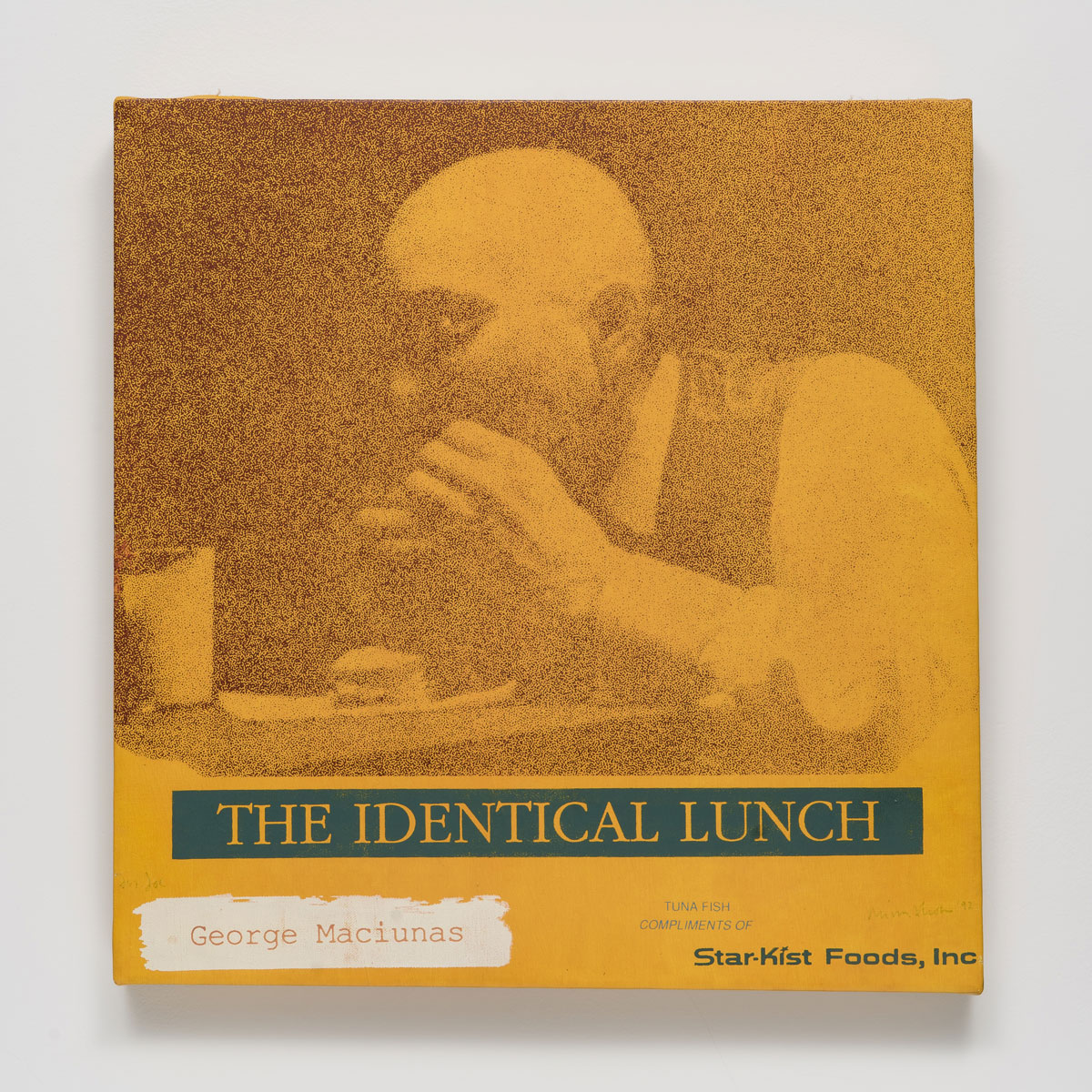
Beans became a recurring motif throughout her career. A pair of works from 2000, Bean Turner, Coral, and Bean Turner, Brown, are also included in the show. They represent another exploration into the tension between finitude and potentiality. Elongated, crumpled sculptures made from hand-crafted flax paper filled with beans, they produce a satisfying, echoing rattle when turned over and the beans cascade down their length. Like any instrument, the sound has its own unpredictable existence separate from the object that produced it. It challenges the limits of what constitutes the work and what we expect from it.
